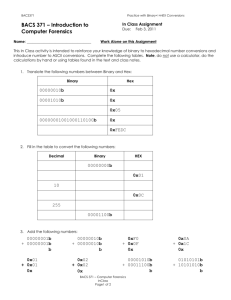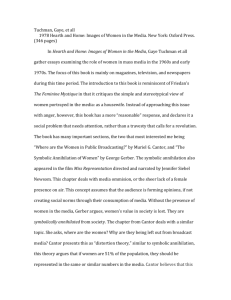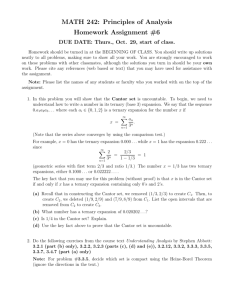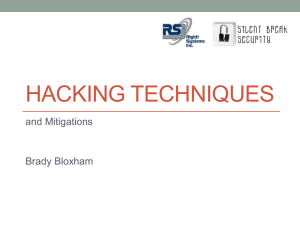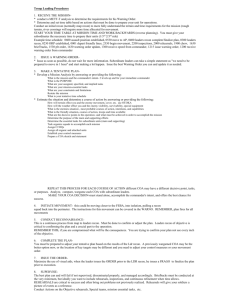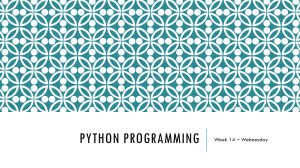Visual Reverse Engineering
advertisement
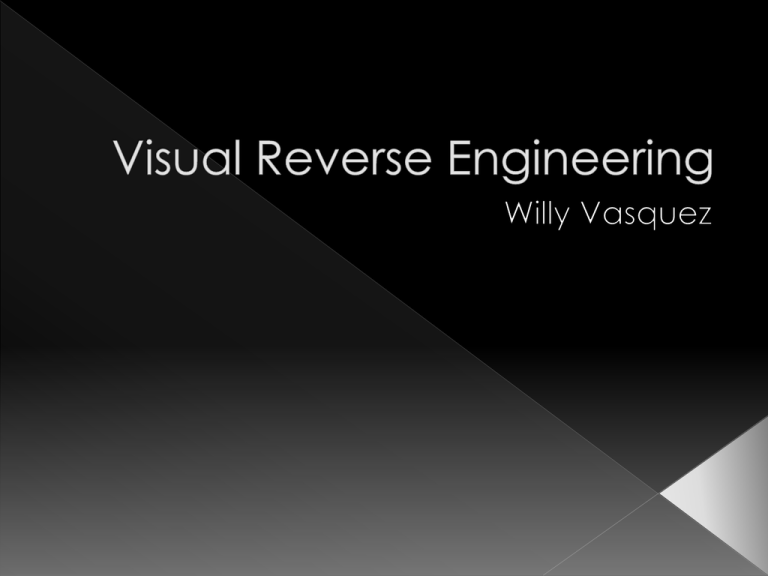
Willy Vasquez Rising Senior at MIT › Studying Computer Science and Engineering › Research with Shafi Goldwasser › Intern at Symantec Mobility Management Group Work of Christopher Domas of the Battelle Memorial Institute Brief overview of his talk at REcon › The Future of RE: Dynamic Binary Visualization The goal is to answer “what is this and what does it do?” Lots of time to identify patterns Finding the patterns is an art. Taking a computationally difficult task and translating it to a problem our brains naturally do Traversing thousands of lines of hex and making sense of it in 20 seconds Steganography Obfuscation Embedded Devices Unknown formats Our current best RE tools are completely dependent on known structure Gates’ Law › Software is getting slower more rapidly than hardware becomes faster › Amount of Information we need to analyze is growing exponentially Greg Conti › US Military Academy › Blackhat Aldo Cortesi › Nullcube › corte.si Even in unstructured data there are relationships, especially among local hex bytes Digraphs Ascii Image Audio Mapping data to Hilbert curves Goal: Understanding data independent of format Named after Georg Cantor Works off of emphasizing the idea of relationships between binary information Bayesion Method to classify certain types of formats Current binary parsing › Recursive descent: IDA style that follows patterns and calls in code › Linear sweep: objdump and goes through in linear fashion Rely on a structures grammar ..cantor.dust.. Uses probabilistic parsing, which does not rely on grammar A new way to look at binary information Can find demo from blackhat presentation: https://media.blackhat.com/bh-us12/Arsenal/Domas/_cantor.dust_.7z.zip No updates since last summer The full talk and slides located on the recon.cx website: › http://recon.cx/2013/schedule/events/20.ht ml

